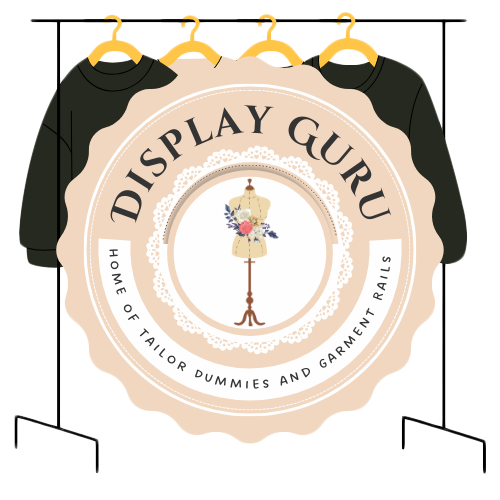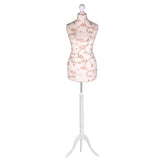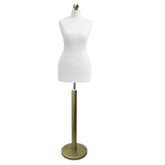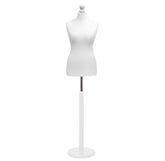Your Guide to an Adjustable Dressmakers Dummy
Ever wrestled with a garment that just refuses to hang right? It’s a frustration every sewer knows intimately. That stubborn gap at the back, the awkward bunching at the waist, or an uneven hemline can stand between your creative vision and a beautifully finished piece. This is precisely where an adjustable dressmakers dummy becomes your most trusted ally.
Think of it less as a piece of equipment and more as a stand-in for yourself or your client. It’s a customisable body double, allowing you to create clothes with a precise, professional fit by perfectly matching specific body measurements.
Your Partner for Creating the Perfect Fit
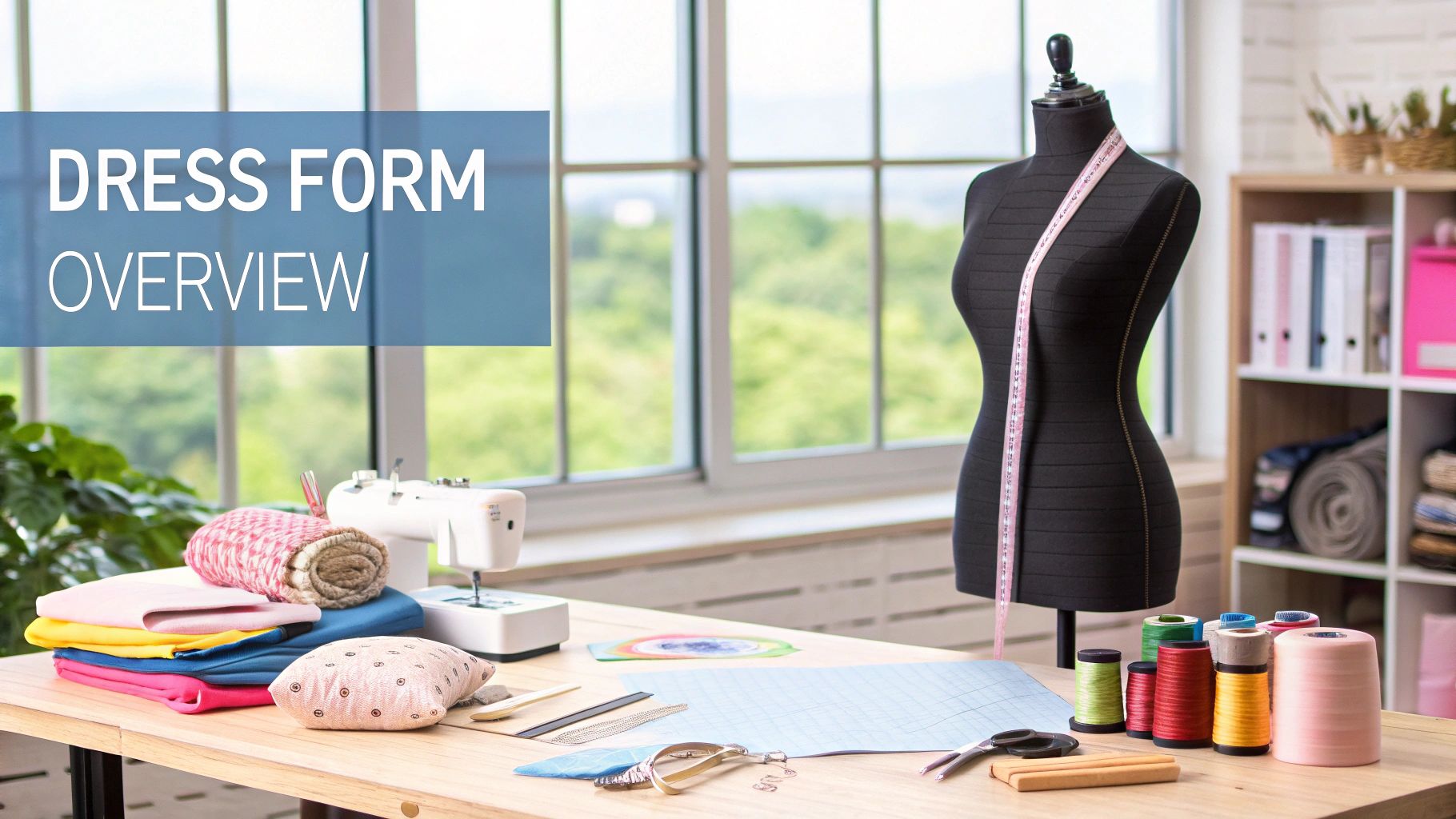
An adjustable dummy, with its series of dials, can be altered at the bust, waist, and hips, making it an invaluable partner for everything from pattern making to final fittings. It gives you a three-dimensional canvas, transforming your ideas into a tailored reality. This guide is here to show you how this essential tool ensures precision and a better fit for every single project.
Why a Dummy Is More Than Just a Mannequin
It's easy to confuse a dressmakers dummy with a shop mannequin, but they serve entirely different purposes. A static mannequin is designed for display, showcasing clothes on an idealised, standardised shape. An adjustable dummy, on the other hand, is built for creation. Its whole point is to replicate the unique contours and proportions of a real body. This distinction is the secret to achieving a truly bespoke fit.
In this guide, we'll walk you through how to:
- Select the right model for the kind of sewing projects you love to do.
- Customise it to become a true body double, mirroring your or your client’s exact shape.
- Use all its features to elevate your craft from homemade to professionally finished.
Whether you're a home sewing enthusiast in the UK working on weekend projects or a professional designer building a collection, understanding how to use this tool is fundamental. It bridges that tricky gap between a flat pattern and a wearable garment, making sure the final piece drapes and fits exactly as you imagined.
An adjustable dummy isn't just about getting the measurements right; it's about understanding the body's volume and shape. It allows you to see how fabric behaves in three dimensions before you ever make a final stitch, saving you time, fabric, and frustration.
By the end of this guide, you’ll have the practical knowledge to choose the right dummy and master it. You'll start to see it not just as an accessory, but as a core part of your creative process—the key to unlocking a higher level of accuracy and craftsmanship in your sewing.
From Static Form to Dynamic Sewing Tool

It’s easy to walk past an adjustable dressmakers dummy and not give it a second thought. They're such a staple in any sewing space. But these incredibly useful tools didn't just appear overnight; they've come a long way from their static, heavy ancestors. Looking back at their history gives you a real appreciation for the clever design sitting in your studio today.
Centuries ago, long before you could twist a dial to adjust a waistline, dressmakers and milliners relied on fixed forms. Their UK origins can be traced as far back as the 15th century, when headless forms were essential for displaying creations and tailoring garments precisely to a client's body. These early dummies were purely functional—a static canvas for bespoke clothing in an age of one-of-a-kind craftsmanship.
Then came the Industrial Revolution, which completely changed the fashion world. As mass production and standardised sizing took hold in the 18th and 19th centuries, the role of the traditional dress form began to shift. It was still a fixture in high-end tailoring, of course, but its industrial use faded as its close cousin, the shop mannequin, stepped into the spotlight as a retail display tool.
The Material Revolution
One of the biggest hurdles with these early mannequins was what they were made of. Typically constructed from wood, wax, or papier-mâché, they were astonishingly heavy. Some tipped the scales at over 130 kilograms! This made them a nightmare to move around, rendering them impractical for smaller dressmaking studios and boutiques.
Thankfully, the 20th century brought a wave of innovation. Lighter materials like fibreglass and, later, advanced plastics started to replace the old, cumbersome models. This was a pivotal moment, making the dressmakers dummy more accessible, portable, and a far more practical tool for a much wider range of creators.
The transition from heavy, fixed forms to lightweight, adjustable models represents more than just a material change; it mirrors fashion's move from exclusive couture to accessible home sewing. The dummy democratised precision fitting for everyone.
This evolution meant a single form could suddenly be tweaked to fit countless different body shapes—a crucial development for professionals and home sewers alike. The ability to minutely alter measurements was a genuine game-changer, transforming the dummy from a passive display piece into an active partner in the creative process. To understand how these tools fit into the bigger picture, you can explore this ultimate guide to sewing products.
From Replica to Body Double
At its heart, the story of the adjustable dummy is one of a relentless quest for precision. Early adjustable models offered basic tweaks, but today's versions allow for incredibly detailed customisation, turning a generic shape into a true body double. This accuracy is the secret to achieving that flawless, bespoke fit.
A modern sewer can fine-tune almost every part of the torso:
- Bust, waist, and hip circumference, usually adjusted with a series of dials.
- Back waist length to match a person's unique proportions.
- Neck and shoulder width to ensure a perfect fit across the upper body.
This level of detail means you can be confident that what you create on the dummy will hang beautifully on the actual wearer. The ability to create such a precise replica is what makes the adjustable dressmakers dummy an absolutely indispensable tool in any sewing room. Of course, before you start adjusting, you need the right numbers to work with. For that, you might find our guide on https://www.displayguru.co.uk/blogs/news/how-to-take-body-measurements-for-clothes-easy-guide incredibly helpful.
Getting to Grips with the Features of a Quality Dummy
Walking into the world of adjustable dressmaker's dummies can feel a bit like learning a new language. All the talk of "parts," "dials," and "stands" can be confusing. But once you understand what these features actually do, you'll be able to spot a truly brilliant sewing partner from a flimsy imitation.
Think of it this way: the more control you have, the better your garments will fit. An 8-part body, for instance, gives you far more sections to adjust than a basic 4-part model. This means you can create much more realistic curves and contours, especially around the bust and hips, which is where a good fit really matters.
Another absolute must-have is an adjustable back waist length. This is the measurement from the base of your neck down to your natural waistline, and it varies hugely from person to person. A dummy that lets you tweak this ensures your bodices won't gape and your jackets will hang perfectly, without any awkward pulling.
Torso Materials and Why the Stand Matters
The material covering the dummy’s torso makes a big difference to how you can work. Most quality forms have a foam-backed nylon cover, which creates a pinnable surface. This is brilliant because it lets you stick pins directly into the dummy to hold fabric in place while you drape or make pattern tweaks. Without it, you're just hanging clothes, not truly sculpting them in 3D.
The stand is your dummy's foundation, and you can’t afford for it to be wobbly. A shaky stand is not only a massive frustration but can also throw off your pinning and draping. You’ll usually come across two main types:
- Tripod Stand: With its three legs (often made of wood or metal), this design is the gold standard for stability. It’s not going anywhere, even when you're working on it.
- Pedestal Stand: This single-column base is a great space-saver for smaller sewing rooms, but it can sometimes be a bit less steady than its three-legged counterpart.
My advice? If you plan on draping heavy fabrics like wool or denim, a solid tripod stand is almost always the smarter choice.
A quality adjustable dressmaker's dummy is more than just a set of measurements; it's a dynamic tool. The difference between a basic model and a superior one lies in its ability to replicate the nuances of the human form through precise adjustments and stable, user-friendly components.
The image below gives a great overview of some of the customisable options and attachments that can take your dummy’s functionality to the next level.
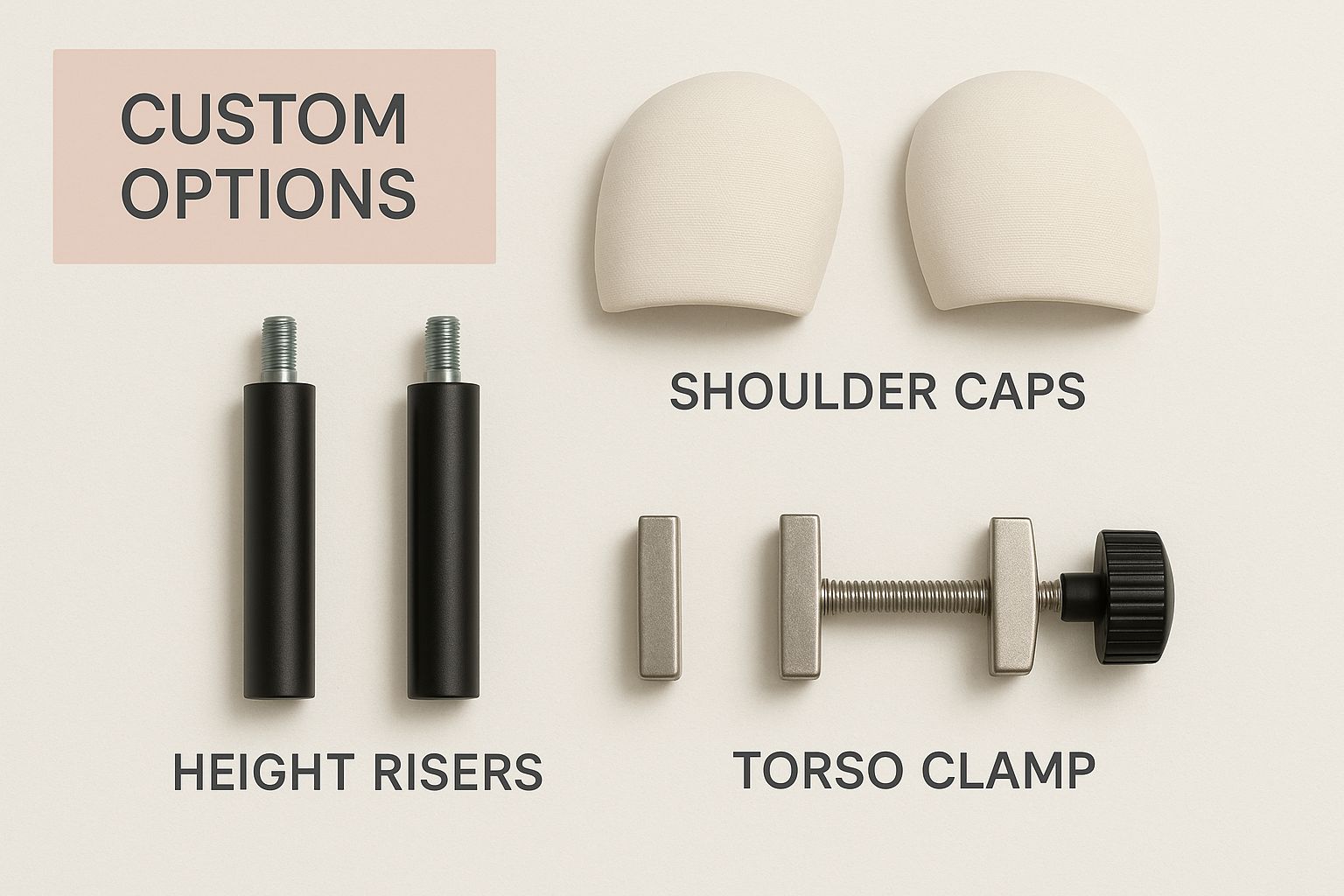
As you can see, things like shoulder caps and height adjusters can transform a standard form into a highly specialised tool, ready to tackle specific fitting challenges.
To help you compare your options, here’s a quick breakdown of the most important features to look out for.
Key Feature Comparison for Adjustable Dummies
| Feature | Common Options | Benefit for Garment Making |
|---|---|---|
| Body Parts | 4-Part, 8-Part, or 12-Part | More parts allow for more detailed and nuanced shaping of the bust, waist, and hip areas. |
| Adjustment Dials | 8 to 12 dials | A higher number of dials provides greater precision for setting individual circumference measurements. |
| Torso Surface | Foam-backed nylon, linen | A pinnable surface is essential for draping fabric, fitting patterns, and making on-the-spot adjustments. |
| Back Waist Length | Fixed, Adjustable | An adjustable length is critical for accurately fitting the torso and ensuring garments hang correctly. |
| Stand Type | Tripod, Pedestal | A tripod stand offers superior stability for heavy-duty work, while a pedestal stand saves space. |
| Hem Marker | Included, Optional attachment | A built-in or attachable hem marker makes achieving a perfectly even hemline much faster and easier. |
Considering these elements will help you move beyond the marketing-speak and focus on the features that will genuinely improve your sewing practice.
All About the Dials: The Heart of Adjustability
The adjustment dials are really the engine of the whole thing. These little wheels, usually found on the front, back, and sides, are what expand and contract the dummy's torso. A top-notch dummy will have dials that turn smoothly and allow for tiny, precise changes. On cheaper models, they often feel stiff or flimsy, and you run the risk of them breaking or slipping just when you've got the measurements perfect.
Aim for a dummy with at least 8 to 12 adjustment dials. This generally ensures you can control the bust, waist, and hip measurements independently and with real accuracy. It’s this level of control that lets you create a truly custom fit, rather than just a generic size.
To see how these features all work together in practice, have a look at this ultimate fit guide for adjustable dressmaking forms. By arming yourself with this knowledge, you’ll be in a much better position to invest in a dummy that will be a reliable, long-lasting partner in your sewing room.
How to Choose the Right Dummy for Your Projects
Picking the right adjustable dressmaker's dummy is a huge decision for your sewing space. It’s more than just a purchase; it's a real investment in your craft. Get it right, and you'll save yourself endless frustration, ensuring every garment you create has the best possible chance of fitting beautifully. Get it wrong, and you're looking at inaccurate fittings and a serious case of buyer's remorse.
Ultimately, this choice is a personal one and hinges entirely on your unique sewing journey. The features a hobbyist needs for whipping up summer dresses are a world away from what a designer requires for crafting bespoke bridal wear. To make the best decision, you have to look beyond the price tag and really match the dummy’s capabilities to your creative ambitions.
Match the Dummy to Your Garment Goals
First things first: think about the kinds of garments you make most often. Not all dummies are created equal, and some features are definitely better suited to certain projects. For instance, if your passion is creating beautifully fitted blouses, jackets, and dresses, a standard adjustable dummy with a central pole will serve you perfectly well.
But, if you're planning to make trousers, you absolutely need a model with an offset pole or a proper leg form. This design lets you work on each trouser leg independently, which is a non-starter with a pole running straight through the centre.
Here’s a quick look at different types of sewers and the features that matter most to them:
- The Hobbyist Sewer: You mainly sew for yourself and love experimenting with different styles. Your focus should be on a dummy that covers your measurement range well and has a good pinnable surface. An 8-part body is a brilliant, versatile starting point.
- The Aspiring Designer: You're developing collections and need absolute precision for sample sizes. For you, a dummy with 12 adjustment points and a solid, stable tripod stand is essential for professional-level draping and fitting.
- The Bespoke Tailor: You create custom garments for individual clients. Your non-negotiables are an adjustable back waist length, a highly accurate dial system, and the ability to pad the form out to replicate unique body shapes with precision.
Finding Your Perfect Measurement Range
One of the most common mistakes people make is buying a dummy that’s either too large or too small. The golden rule is this: choose a model where your personal measurements fall somewhere in the middle of its adjustment range. This gives you breathing room to accommodate natural body fluctuations and ensures the dummy stays stable and correctly proportioned.
Pushing a dummy to its absolute maximum or minimum size can distort its shape and make it wobbly. It's always better to start with a slightly smaller form and pad it out for a perfect match than to use a larger form cranked down to its smallest setting.
To nail this, take your bust, waist, and hip measurements accurately before you even start looking. Compare those numbers directly with the size charts from the manufacturers. This one simple step is the most effective way to make sure you bring home a tool that genuinely works for you. For more detailed guidance, our ultimate fitting guide can walk you through it step-by-step. Find more details in our article on selecting an adjustable mannequin for sewing.
Balancing Budget with Long-Term Value
While it’s tempting to grab the cheapest model you can find, it’s so important to see an adjustable dressmaker’s dummy as a long-term asset. Durability and functionality are everything. In the UK fashion and retail sector, a quality mannequin is a serious tool, often costing between £750 and £900 with a typical lifespan of about seven years. This reflects the industry's focus on balancing robust construction with precise functionality—a principle that home sewers can learn a lot from. To explore more about the role of these tools in the UK market, you can find valuable insights from this report on mannequin trends and figures.
Investing a little more upfront often pays off massively in the long run. A well-made dummy with a sturdy stand and smooth, reliable dials will last for years, giving you a dependable foundation for countless projects. Cheaper alternatives often come with wobbly stands, flimsy dials that break easily, or torso coverings that you can’t properly pin into, leading to nothing but frustration and inaccurate results.
In the end, choosing the right adjustable dressmaker's dummy is about finding a durable, functional partner for your sewing studio. By aligning your choice with the garments you love to create, matching the measurement range to your body, and prioritising long-term value, you can avoid the common pitfalls and select a tool that will empower your creativity for years to come.
Setting Up and Customising Your Dummy
An adjustable dressmaker’s dummy straight out of the box is a brilliant start, but its true potential is only unlocked when you go beyond the basic settings. You need to transform it from a generic mannequin into your personal body double. While the dials get you into the right ballpark, the real magic happens when you add custom padding to replicate every unique curve and contour. This is the process that turns a useful tool into an indispensable partner for creating clothes that fit like a glove.
First things first: you need a fresh, accurate set of your own body measurements. Don't be tempted to use old numbers you have jotted down somewhere, as our bodies are always changing. Grab a flexible tape measure and carefully record the key circumferences—your bust, waist, and hips—along with the crucial back waist length.
With these core numbers in hand, you can start adjusting your dummy. The key is to work methodically, tackling one set of dials at a time. I always suggest starting with the bust, then moving on to the waist, and finishing with the hips. Turn the dials slowly and evenly, stopping frequently to check the measurement with your tape until it matches your own perfectly.
Beyond the Dials: Perfecting the Fit
Getting the main circumferences spot-on gives you the essential foundation, but let's be honest—no human body is perfectly symmetrical or shaped exactly like a standard form. This is where the art of padding comes into play. Padding is the secret weapon that professionals use to achieve a truly accurate replica of a body, accounting for all the little details the dials simply can't.
Think of it like this: the dials build the basic skeleton, but padding is what sculpts the flesh and brings it to life. You’ll need some supplies, mainly polyester wadding (sometimes called batting) and a snug, stretchy cover to hold everything neatly in place.
Begin by putting the dummy next to you in front of a mirror and identifying where your body shape differs from the form. The most common areas that need a bit of extra help include:
- A full or high bust that requires more projection at the front.
- Rounded or prominent shoulder blades, which will mimic your natural posture.
- A slightly rounded tummy or a sway back, both of which have a massive impact on how skirts and trousers hang.
- Fuller hips or a flatter seat, ensuring a perfect fit through the lower body.
Cut pieces of wadding to mimic these specific shapes and use pins or even a light spray adhesive to keep them in position on the dummy. It's best to build up the layers gradually. Every so often, try a close-fitting top or dress that you already own over the dummy to check your progress. This is a bit of a back-and-forth process; you'll likely add and remove padding a few times before you get it absolutely right.
The aim of padding isn't just about matching numbers on a tape measure; it's about replicating volume and posture. A well-padded dummy doesn't just share your measurements—it shares your unique shape, ensuring garments hang on it exactly as they will on your own body.
Once you’re happy with the padded shape, pull your custom cover tightly over the form. This is the final touch that smooths out any lumps and bumps from the wadding, creating a firm, pinnable surface that truly mirrors your body's contours. This step solidifies your dummy as your true second self in the sewing room.
For a deeper look into different types and features, our guide to adjustable dress forms for sewing provides excellent additional context. With this customised tool at your side, every garment you drape, pin, and construct will be destined for a flawless fit from the very first stitch.
Looking After Your Dummy in the Modern UK Market
An adjustable dressmakers dummy is a real investment in your craft, and if you treat it well, it'll be a faithful sewing partner for years to come. Looking after this essential tool is about more than just a quick dust-off; it’s about understanding its moving parts and appreciating its value in the UK's vibrant fashion scene. Proper care ensures your dummy stays accurate and reliable, project after project.
Keeping it in good nick is pretty straightforward, but you do need to be consistent. The torso is usually covered in a foam-backed nylon fabric, which is a magnet for dust and loose threads. A quick once-over with a lint roller is brilliant for daily tidying, while a slightly damp cloth can tackle any small marks. Just be sure to avoid harsh chemicals or abrasive sponges, as they can easily ruin that crucial pinnable surface.
Keeping Your Dummy in Prime Condition
The dials and adjusters are the heart of your dummy, and they need a bit of attention to keep them working smoothly. Over time, especially in a busy studio, the internal gears can get a bit stiff with dust. A tiny bit of silicone-based lubricant on the adjustment points once or twice a year will keep everything turning just as it should.
Follow these simple steps for routine care:
- Regular Cleaning: After each project, give the torso a quick going-over with a lint roller or soft brush to get rid of pins and fabric bits.
- Check Stability: Every so often, check and tighten the screws on the stand. This is especially important for tripod models to stop any annoying wobbles.
- Lubricate Dials: Once a year, apply a small amount of silicone lubricant to the dial mechanisms to guarantee smooth, precise adjustments.
Think of maintaining your dummy like tuning an instrument. A little bit of consistent care ensures it performs perfectly every time, giving you the accurate foundation needed for professional-looking garments. A small effort now prevents bigger headaches later on.
Your Dummy's Place in Today's UK Market
It’s also interesting to understand the wider context of your tool. The UK mannequin industry is always evolving, mirroring the latest shifts in fashion, retail, and sustainability. Valued at roughly USD 278.2 million in 2023, the market is set to grow, which really shows the increasing demand for tools like adjustable dressmaker dummies from both professional designers and the booming community of home sewers. You can read more about the UK mannequin market's future on Grandview Research.
This market trend shows a clear preference for materials that are both durable and adaptable. Fibreglass models are still the most popular, loved for being sturdy yet surprisingly lightweight. But there's also a growing interest in dummies made from recycled plastics, as UK makers are increasingly focused on sustainable practices. So, when you're looking after your adjustable dummy, you're not just maintaining a piece of kit; you're preserving a valuable asset that perfectly blends traditional craftsmanship with modern industry innovation.
Your Top Questions About Dressmakers Dummies Answered
Once you get your hands on an adjustable dummy, you'll find that theory is one thing, but practice is another. A few common questions always seem to pop up as you start working. Getting these sorted early on will give you a real confidence boost and help you get professional results from day one.
Let's dive into the queries we hear most often from sewers and designers. We'll cover everything from fitting tricky garments to the age-old debate of padding up versus dialling down.
Can You Really Use a Dummy for Trousers?
This is probably the number one question we get, and the answer is a big yes, but with one crucial catch. A standard dummy with a pole running right up the middle is going to cause a lot of frustration when you're trying to fit trousers. The pole simply gets in the way, making it impossible to drape and fit the legs properly.
The solution? You need a model with an offset pole or a proper leg form. These clever designs shift the stand to one side, leaving the crotch area completely clear. This frees you up to work on each trouser leg independently, which is the only way to nail a symmetrical, perfectly tailored fit.
How Do I Choose the Right Size Range?
Getting the size right is hands down the most important decision you'll make. It’s so tempting to buy a dummy that just about matches your current measurements, but this is a classic beginner's mistake. If your measurements are at the very top or bottom of the dummy's range, you'll have no wiggle room and the form can become wobbly and unstable.
The golden rule is simple: choose a dummy where your measurements sit somewhere in the middle of its adjustment range. This gives you the flexibility to account for body changes and keeps the dummy stable and correctly proportioned.
Think of it as future-proofing your purchase. It means small fluctuations in your own size won't force you to buy a whole new dummy. For a closer look at what’s out there, our guide to the 7 best dress forms for sewing in the UK is a great place to start.
Should I Pad a Small Dummy or Buy a Larger One?
Here's another great debate: is it better to buy a smaller dummy and pad it out, or get a larger one and dial it down? On this, the experts all agree.
It is always, always better to start with a dummy that's a bit smaller than you and pad it to fit perfectly. The dials get you into the right ballpark, but padding is what lets you mimic the unique curves and bumps of a real human body.
- Embrace Your Asymmetry: Most of us aren't perfectly symmetrical. You can add a little extra padding to one hip or build up a shoulder to match your body exactly.
- Sculpt Your Shape: Padding lets you build up the bust, add a rounded tummy, or define the shoulders to create a true body double.
- Precision is Key: This hands-on approach gives you a far more accurate fitting tool than a larger, generic form ever could.
By taking the time to pad your dummy, you transform it from an off-the-shelf tool into a bespoke replica of your own body. That's the secret to getting a flawless fit, every single time.
At Display Guru, we provide high-quality, durable mannequins that serve as the perfect foundation for all your creative projects. Whether you're padding for a custom fit or setting up for a new design, our dummies offer the stability and reliability you need.
Explore the Display Guru collection today and find the perfect partner for your sewing studio.
